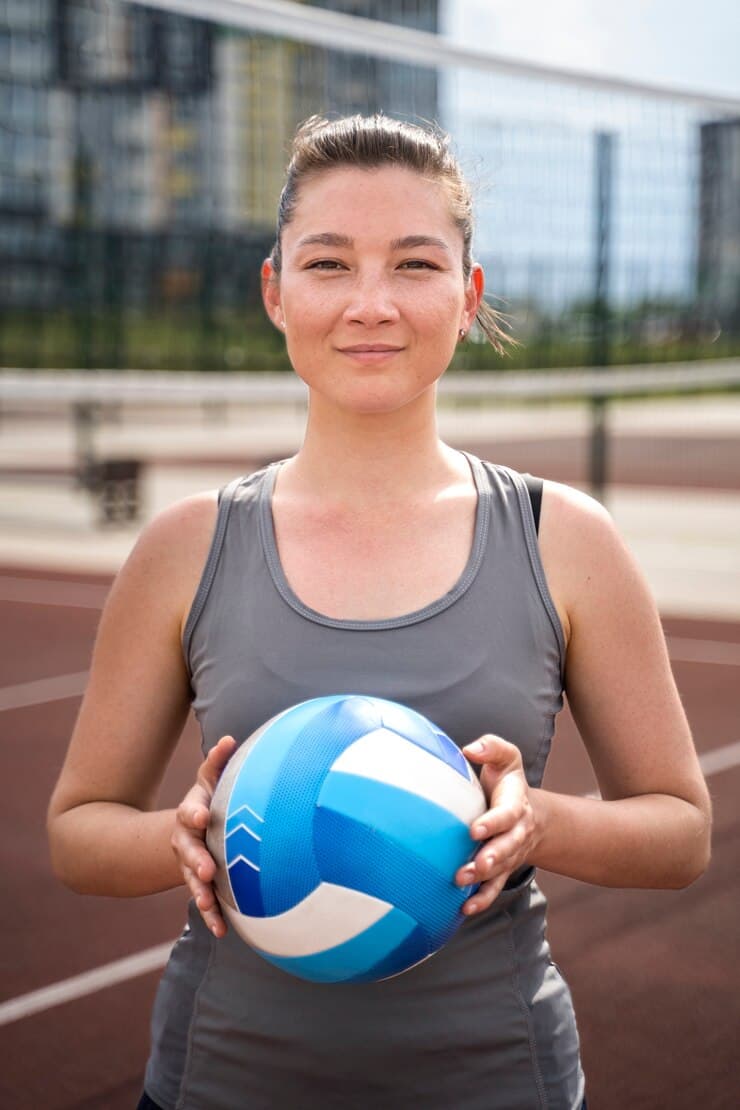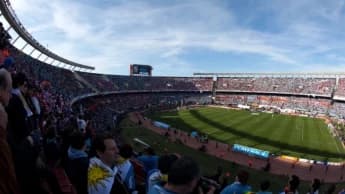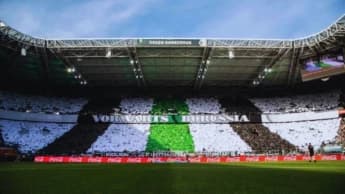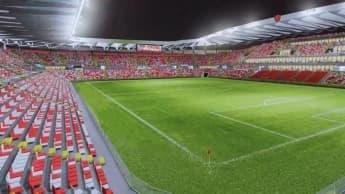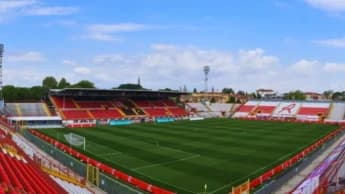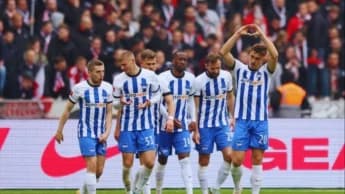The Veltins-Arena, home to Schalke 04, redefines stadium architecture with its retractable roof and slide-out pitch, delivering unforgettable experiences for fans and event-goers alike.
Arena AufSchalke (pronounced in German now referred to as Veltins-Arena due to sponsorship), is recognized as one of Germany's most famous football stadiums. Situated in Gelsenkirchen, North Rhine-Westphalia, this modern facility opened on August 13, 2001, serving as the new home for Bundesliga club FC Schalke 04. Renowned for its innovative architecture and adaptable design, the stadium can hold 62,271 fans for domestic league games and 54,740 seated spectators for international events. In 2024, it was honoured to host four matches during the UEFA European Championship, further solidifying its status on the global stage.
The concept for the stadium emerged in the late 1990s, as Schalke 04 aimed to replace the aging Parkstadion. With the excitement from the club’s UEFA Cup victory in 1996–97 and the approaching 100th anniversary of Schalke 04 in 2004, the club contracted German construction company HBM in 1998 to create a modern venue. The selected site, Berger Feld, is located next to the old Parkstadion on land owned by the club. Due to the existence of two mining shafts under the site, engineers had to adjust the stadium’s main axis to ensure the new structure's safety. The design included a two-tier seating configuration built on a base of cast concrete and compacted slag, a by-product of steel production.
What truly distinguishes Veltins-Arena is its innovative design. The stadium features a retractable roof made from Teflon-coated fiberglass canvas, capable of completely enclosing the space and supported by a rectangular truss system attached to 24 large steel pylons. Additionally, the arena has a slide-out pitch system, which allows the playing surface to be moved outdoors for sunlight and maintenance, ensuring the grass remains in top condition. Another notable technological feature is the centrally suspended video scoreboard, a first of its kind in football stadiums, delivering unobstructed views of the action for fans from every angle.
The venue’s infrastructure accommodates not just sports events but a wide range of entertainment activities. On match days, supporters benefit from 15 restaurants, 50 grilling stations, and 35 cafés on-site. These amenities are interconnected by an extensive 5-kilometer-long beer pipeline, capable of dispensing up to 52,000 liters of beer during a single event. The arena's naming rights were acquired by the German brewery Veltins in July 2005, which led to the stadium bearing its current name.
Since opening, Veltins-Arena has served as a venue for many of the world's major sports and entertainment events. It was the site of the 2004 UEFA Champions League final and hosted five matches during the 2006 FIFA World Cup, including a pivotal quarter-final match. The stadium was also chosen for the opening game of the 2010 Ice Hockey World Championship, showcasing its adaptability beyond football. In addition to sports, the venue has hosted numerous global music legends. Artists and bands such as The Rolling Stones, Bruce Springsteen, Bon Jovi, Metallica, AC/DC, Taylor Swift, and Rammstein have performed here, attracting tens of thousands of fans to the arena.
The architectural and technological innovation of Veltins-Arena has made a significant impact on stadium design worldwide. Its features have inspired the development of newer venues, such as State Farm Stadium in the United States and Friends Arena in Sweden, both of which adopted the concepts of a retractable roof and a movable pitch.
As a key element of Schalke 04's identity and an emblem of contemporary stadium design, Veltins-Arena represents Germany's enthusiasm for sports, innovation, and entertainment.
Historical Background and Building Process
In the late 1990s, proposals were put forth to build a new stadium for Schalke 04 to replace the old Parkstadion. After Schalke 04's victorious campaign in the 1996–97 UEFA Cup and in anticipation of the club's centenary in 2004, a contract to construct the new stadium was signed with the German construction company HBM in 1998. The objective was to design a modern, multi-purpose stadium that would cater to both the football club and various other events.
The new arena was set to be constructed near the old Parkstadion on a club-owned site referred to as 'Berger Feld.' This location has a long-standing association with the club and is centrally situated in Gelsenkirchen, North Rhine-Westphalia. However, the existence of two mine shafts underneath the proposed site posed a considerable engineering obstacle. To resolve this issue, the main axis of the stadium was adjusted to avoid the shafts, thereby maintaining the structural integrity of the entire facility. This adjustment influenced the final orientation and overall architectural design of the stadium.
Construction officially commenced when HBM was awarded the contract. The arena features a two-tier design that provides optimal sightlines for spectators while maximizing its capacity. It was constructed on a foundation of cast concrete and packed slag, a by-product of steel smelting, which reflects the industrial heritage of the region. This choice of materials not only enhanced the stability of the structure but also served as a symbol, linking the modern facility to the area's historical roots.
The stadium's most notable and cutting-edge feature is its retractable roof, which spans the entire venue. Made from Teflon-coated fiberglass canvas, the roof is upheld by a rectangular truss and 24 enormous steel pylons. This retractable design allows the arena to adapt to any weather conditions, enabling versatility for both sports events and other large gatherings.
Also revolutionary is the stadium's retractable pitch, which can be completely removed from the arena. This innovative feature allows the grass to receive natural sunlight and be properly maintained without interference from events occurring inside the stadium. The mobile pitch system helps ensure a high-quality playing surface throughout the year and permits the venue to host a diverse range of events without undermining its main purpose as a football field.
An additional architectural advancement was the implementation of a centrally suspended scoreboard, marking the first of its kind in a football stadium. This design guarantees visibility for all attendees, regardless of where they are seated, thereby improving the overall matchday experience.
Regarding infrastructure, the stadium was designed to efficiently and comfortably host large audiences. The layout includes extensive catering services, featuring 15 small restaurants, 50 grilling stations, and 35 cafés located throughout the facility. All these amenities are supported by an underground beer line network that spans over 5 kilometers and can deliver up to 52,000 liters of beer on match days. This comprehensive planning and integration demonstrate the meticulous attention to detail that was applied during the building process.
The stadium officially opened on August 13, 2001, and quickly became known as one of the most modern football venues in Europe. In July 2005, the naming rights were acquired by the German brewery Veltins, and the arena was renamed Veltins-Arena.
Since its establishment, the construction of Veltins-Arena was fueled by Schalke 04’s ambition to create a modern stadium that would represent both advancement and pride. Designed utilizing state-of-the-art technology and with a keen focus on the club's history and future requirements, the arena continues to be a landmark in the realm of sports architecture.
Architectural and Design Elements
The Veltins-Arena is celebrated for its state-of-the-art architectural and design features, making it one of the most advanced football stadiums globally. The stadium's most notable feature is its retractable roof, made from Teflon-coated fiberglass canvas. This roof covers the entire facility and is supported by a rectangular truss system elevated by 24 steel pylons. The retractable design allows the stadium to adapt to different weather conditions, ensuring that events can proceed without interruptions due to external climate factors. This adaptability makes the venue ideal not just for football games, but also for concerts, ice hockey, speedway racing, and a variety of other large-scale indoor events.
A key feature of the Veltins-Arena is its retractable pitch. The playing surface is set on a large tray that can be fully extended outside the stadium. This groundbreaking design allows natural grass to receive maximum sunlight and airflow, which is crucial for maintaining a top-quality playing field. Furthermore, it permits the stadium's interior to host non-sporting events without harming the pitch. The retractable pitch concept facilitates the venue's dual-use while ensuring the turf remains in excellent condition for football games.
The seating layout of the stadium is structured in two tiers, providing excellent sightlines from every angle. Crafted to enhance the spectator experience, both the lower and upper tiers are constructed upon a base of cast concrete and compacted slag from steel manufacturing. This design not only honors the region's industrial heritage but also guarantees the building's stability. The seating capacity varies depending on the event type: it accommodates 62,271 for Bundesliga games, which include standing terraces, and 54,740 for international matches, which necessitate all-seater arrangements.
The Veltins-Arena has introduced a groundbreaking innovation with its centrally suspended scoreboard. This scoreboard, which hangs from the roof structure, offers real-time updates and visual replays, keeping fans engaged with the game no matter where they are seated in the stadium. Its positioning reduces obstruction while also enhancing the contemporary design of the venue's interior.
The arena places a strong emphasis on enhancing fan comfort and convenience with its comprehensive food and beverage options. Inside the stadium, there are 15 small restaurants, 50 grilling stations, and 35 cafés, all designed to efficiently cater to thousands of fans during events. These facilities are supported by an underground beer-line system that extends 5 kilometers. This network can dispense up to 52,000 liters of beer on a match day, ensuring a smooth refreshment experience for attendees and highlighting the stadium's close partnership with its sponsor, the German brewery Veltins.
From an outside viewpoint, the stadium's design is both practical and aesthetically impressive. The steel pylons that support the retractable roof serve as crucial engineering elements while also enhancing the arena's unique silhouette. The incorporation of contemporary building materials and movable features demonstrates a dedication to flexibility, eco-friendliness, and advanced technology.
The stadium's orientation was meticulously adjusted because of the existence of two mine shafts located beneath the site. This necessitated a rotation of the main axis during the design phase to ensure structural safety, showcasing the architectural planning team's ability to adapt to geological challenges.
The design and architectural innovations of the Veltins-Arena have established it as a benchmark for future stadiums globally. Its features have notably influenced the development of other significant venues, such as State Farm Stadium in the United States and Friends Arena in Sweden. Both stadiums have incorporated similar technologies, including retractable roofs and movable pitches, inspired by the groundbreaking work achieved in Gelsenkirchen.
By integrating functionality, enhancing the fan experience, and showcasing architectural creativity, the Veltins-Arena serves as a model for stadium design and remains a vital center for football and entertainment in Germany.
Ambiance and Spectator Experience
The Veltins-Arena is renowned not just for its stunning architecture but also for the outstanding atmosphere and fan experience it provides. As the home ground of FC Schalke 04, the arena serves as a stronghold of enthusiasm and pride, creating an environment where fans feel a profound connection to their team. Each match day transforms the stadium into a vibrant display of color, sound, and emotion, uniting tens of thousands of supporters in one of the most exhilarating atmospheres in German football.
The stadium can accommodate 62,271 spectators for domestic matches, creating an intense and lively atmosphere, with both seated and standing sections enhancing the dynamic environment. For international fixtures, where standing is not allowed, the capacity is reduced to 54,740, still providing a full and spirited crowd. The two-tier seating design ensures that all fans enjoy a great view of the pitch, fostering a stronger connection and engagement with the game.
A standout feature of the fan experience at Veltins-Arena is the Nordkurve, located on the northern side, which is home to the most fervent Schalke supporters. This area transforms into the vibrant core of the stadium during matches, filled with constant chanting, synchronized displays, and the fluttering of flags and scarves. The stadium's acoustics enhance the chants and songs, creating an even more powerful and immersive atmosphere. The Nordkurve is essential in motivating the team and establishing a daunting environment for opposing teams.
The retractable roof plays a crucial role in creating the atmosphere, allowing matches and events to take place regardless of the weather. When it is closed, the enclosed space amplifies sound, increasing the noise generated by fans. This controlled environment produces a concert-like effect, where every cheer, chant, and reaction from the audience contributes to the overall experience.
The fan experience before and after matches includes a wide range of food and drink options available throughout the stadium. With 15 small restaurants, 50 grilling stations, and 35 cafés, fans can enjoy a diverse selection of refreshments. A unique 5-kilometre-long beer line system provides up to 52,000 litres of beer on match days. This setup guarantees fast and efficient service, reducing waiting times and allowing supporters to make the most of their event experience.
The ambiance is further enriched by the centrally hanging scoreboard, a unique feature for any football stadium. This innovation ensures that fans remain informed and entertained, displaying live match statistics, video replays, and visual effects that can be seen from every seat. The scoreboard contributes to the stadium’s contemporary atmosphere and keeps fans engaged in the action at all times.
Beyond regular league and international games, the stadium frequently hosts a diverse array of events, such as concerts, ice hockey, darts, and motorsports. These activities draw in a varied audience and highlight the stadium's adaptability while ensuring the high levels of comfort and excitement that attendees anticipate. The venue has welcomed performances from iconic music legends like The Rolling Stones, Bruce Springsteen, Bon Jovi, Metallica, AC/DC, Taylor Swift, and Rammstein, attracting large crowds and turning the location into a cultural landmark.
The design of access to the Veltins-Arena emphasizes convenience. Situated in the Berger Feld area of Gelsenkirchen, it is easily accessible through public transportation and major roadways. The stadium's design facilitates smooth entry and exit for tens of thousands of fans, minimizing congestion and enhancing the overall experience. Additionally, facilities for individuals with disabilities are well-coordinated, providing accessible seating, restrooms, and services.
In addition to its physical structures, the Veltins-Arena serves as a vibrant hub for traditions and emotions. The devoted supporters of Schalke 04 share a profound bond with the club’s history, which becomes particularly evident on match days. The playing of the club anthem and the overwhelming wave of blue and white in the stands create a unique atmosphere. The pre-match rituals foster a strong sense of unity and identity that echoes throughout the arena.
Every element of the Veltins-Arena has been crafted with the fan at its core. From the cutting-edge architecture and acoustic enhancements to the food, beverages, and accessibility options, the venue emphasizes comfort, excitement, and interaction. The outcome is a stadium that not only hosts premier events but also provides memorable experiences for everyone who enters its gates.
The atmosphere and fan experience at Veltins-Arena are unmatched. The enthusiasm of the fans, the thoughtful architecture of the stadium, and the variety of facilities for supporters all contribute to a football environment that is exciting yet inviting. Whether it’s an intense Bundesliga match, a European tournament game, or a significant concert, the Veltins-Arena provides an experience that makes a lasting impact on everyone present.
Documentation and Heritage
Since its opening on 13 August 2001, the Veltins-Arena has become one of the most iconic and multifunctional stadiums in Europe. Serving as the home of FC Schalke 04, it has hosted a multitude of unforgettable football matches, as well as being a top venue for major international sports events and acclaimed concerts. Throughout the years, the stadium has created an impressive legacy and established numerous important records that have enhanced its worldwide standing.
An important early achievement in the stadium's history was its involvement in European football. On 26 May 2004, the Veltins-Arena hosted the UEFA Champions League final between AS Monaco and FC Porto. Porto emerged victorious with a score of 3–0, managed by José Mourinho, marking the stadium's place in the global football arena. Successfully hosting such a significant final showcased the venue’s ability to manage large events and solidified its reputation as a premier football destination.
The arena was a key venue in the 2006 FIFA World Cup, hosting five matches, including a quarter-final. This event marked a significant highlight in the stadium's early years, demonstrating its advanced features and excellent facilities for spectators to a worldwide audience. Fans from around the globe attended the matches, showcasing the Veltins-Arena's capacity to provide a premier tournament experience.
Beyond football, the Veltins-Arena has made a name for itself in other sports as well. On May 7, 2010, it was the venue for the opening match of the IIHF Ice Hockey World Championship, featuring Germany against the United States. This game attracted an audience of 77,803, setting a world record for attendance at an ice hockey match at that time. This notable achievement showcased the stadium's versatility and its ability to adapt to various sporting events while ensuring an exceptional experience for spectators.
The stadium has also hosted motorsport events, including the German Speedway Grand Prix. Its capacity to support such a wide range of activities highlights the venue's innovative design and flexibility, which facilitates the transformation of the playing area to accommodate different surfaces and needs.
A significant aspect of the Veltins-Arena’s legacy is its impact on contemporary stadium design. The arena's retractable roof, movable playing surface, and centrally located scoreboard were innovative at the time of its construction. These elements have inspired the creation of various notable stadiums worldwide, such as State Farm Stadium in Glendale, Arizona, and Friends Arena in Stockholm, Sweden. The arena’s innovative approach to stadium architecture has made a lasting impression on the design and construction of multi-purpose venues.
The Veltins-Arena has emerged as an iconic venue in the realm of music and entertainment. It has been the stage for performances by renowned artists such as The Rolling Stones, Bruce Springsteen, Bon Jovi, Metallica, AC/DC, Taylor Swift, and Rammstein. These events have attracted large crowds and established the arena as a prime location for international tours. Its exceptional acoustics, ample seating, and state-of-the-art staging make it a highly desirable site for live music events across Europe.
The stadium's participation in UEFA Euro 2024 has further solidified its reputation as a top-tier football venue. It played host to four matches during the tournament, upholding its legacy of being part of significant international events. These matches highlighted the stadium's lasting quality and its importance in the realm of global sports.
The Veltins-Arena has been the site of many unforgettable moments for Schalke 04 in domestic football. It has hosted thrilling Bundesliga matches, electrifying European nights, and significant milestones for both players and supporters. The atmosphere created inside, especially from the devoted Nordkurve, has established it as one of the most formidable and revered venues in German football.
The decision made in July 2005 to sell the naming rights to the German brewery Veltins further shaped the stadium's identity. This partnership has contributed to the financial stability of the arena and has enabled ongoing investments to maintain its elite status. The installation of a 5-kilometre beer line, capable of serving 52,000 litres each match day, demonstrates the incorporation of commercial innovation into the fan experience, resulting in a distinctive and unforgettable atmosphere for guests.
Throughout the years, the Veltins-Arena has transformed into much more than just a football stadium. It has become a cultural and social center for the region, representing the pride and aspirations of Gelsenkirchen and the broader North Rhine-Westphalia area. Its capability to host a wide variety of events with exceptional quality has established it as a cornerstone of the community and a model of modern stadium development.
The Veltins-Arena's legacy is characterized by its innovative architecture, record-setting events, and steadfast fan support. Its impact transcends its steel structures and retractable roof, permeating the realms of sports, entertainment, and architectural history. As it continues to welcome new generations of events and attendees, the stadium stands as a symbol of vision, versatility, and excellence at all levels.


